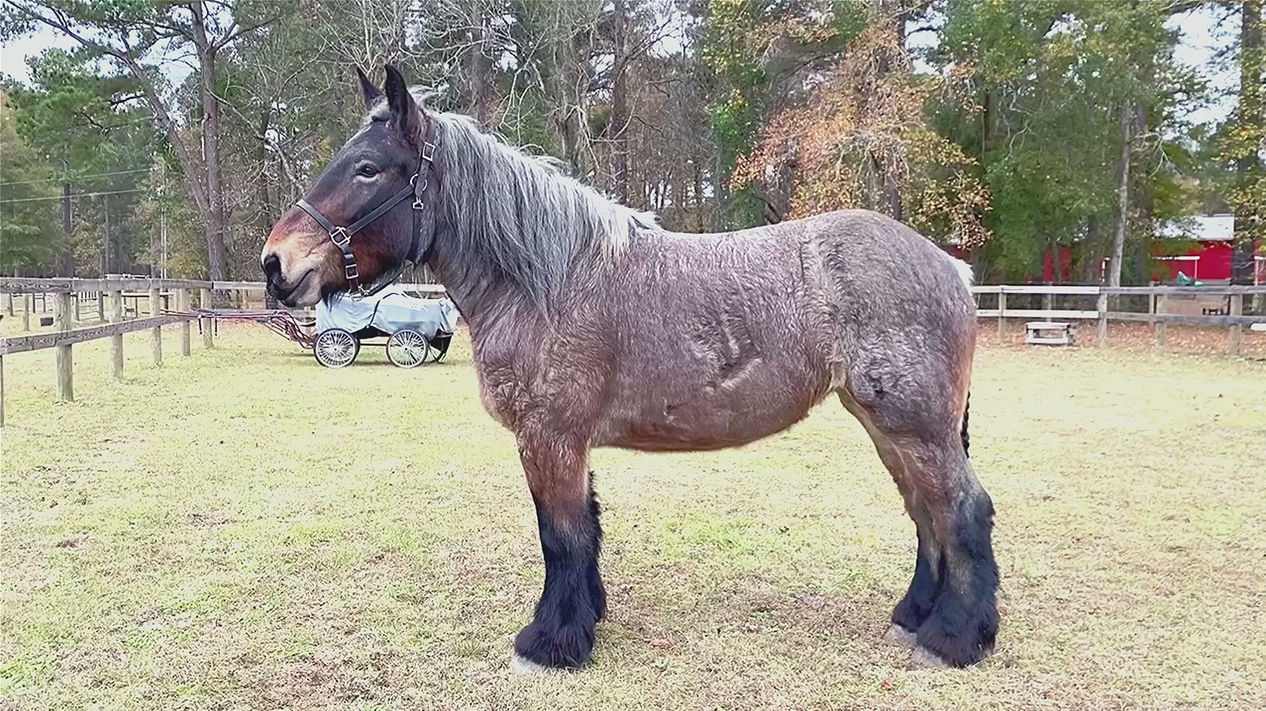Photo & Video Guidelines
REGISTRATION PHOTO: Anyone applying for registration is required to submit one full side view of their horse with all four legs visible and the head tilted slightly toward the camera. Submit photo(s) and video(s) online via email to registrar@europeanbrabant.com, or you can upload media to the EBRA Google Drive by clicking HERE. You can also send a thumb drive with media by mail to 407 Woodland Rd Mercer, PA 16137.
QM & BREED STANDARD EVALUATION PHOTOS & VIDEOS: Those applying for "QM" or "Breed Up" Breed Standard Evaluations are required to submit five photographs:
-
Full right side view
-
Full left side view
-
Rear view
-
Front view
-
Headshot.
-
Movement video

Full Right Side Photo
Anyone applying for registration is required to submit one full side view (left or right) of their horse with all four legs visible. If possible, have the horse's head tilted slightly toward the camera. The camera should be positioned horizontally while capturing all side-view photos.
Position the camera at the center-mass of the horse (mid-ribcage) and lower yourself until the horizon line goes straight through the middle of the horse. Imagine there’s a grid over your horse, and try to keep shoulders and hips squared within the grid. This will ensure you are truly square to the horse and not capturing any unwanted distortion that may skew their conformation. (see instructional video below)

Full Left Side Photo
Here are some tips for capturing the best photo(s) for registration:
-
Find a location that is relatively level and free of clutter where you can tie your horse, or have a helper hold them, to take the photos.
-
The horse should be clean, with no saddle or harness
-
All white markings should be visible – braid forelock and tail if necessary
-
Horses with white face markings should have their head tilted slightly toward the camera
-
Allow adequate space around the animal – Do not crop into the horse
-
If image editing, do not apply color or distorting filters

Full Front Photo
Camera Orientation: When capturing the rear and front views, be sure to orient the camera vertically.

Full Rear Photo
Camera Position: Center the camera on the horse’s chest and/or tail, then lower yourself until the horizon line goes straight through the middle of their body. Imagine there’s a grid over your horse and try to balance their body within the grid. This will ensure you are truly square to the horse and not capturing any unwanted distortion that may skew their conformation. Braid the tail if legs are not visible.

Headshot
Camera Orientation: When capturing the portrait, be sure to orient the camera vertically. You should see both eyes, nostrils, ears and any white facial markings. Braid the forelock if necessary.
Camera Position: Center the camera on the horse’s face, then lower yourself until the horizon line goes straight through the middle of their body. Imagine there’s a grid over your horse’s face and try to balance their face within the grid. This will ensure you achieve a true full-frontal portrait.

Movement Video Guidance
Anyone applying for Breed Standard or QM Evaluations are required to submit a videos which show a 360-degree view of the horse standing still as well as the horse at the walk and trot. The horse should be clean, with no saddle or harness and led in-hand for the recording.
-
Background: Find a location that is relatively level and free of clutter, large enough to lead your horse in a minimum 30’ triangle.
-
Camera: Whether you prop your recording device up on a fence, use a tripod or have someone record for you, ensure the platform is level and stable.
Camera Position
Situate the camera so it is at the horse’s chest height, ensuring it is level and secure before pressing record. If handheld, do not move the camera excessively.
Walk & Trot Patterns
Walk straight away from camera about 30 feet, turn around and walk straight back. Repeat the same pattern at the trot. Then walk left to right in front of the camera, turn around and walk back. Repeat the same pattern at the trot. If you or your horse handler would like to do this twice, three times, four times... that is acceptable. There is no such thing as too much video. More footage provides evaluators a better view of the horse’s movement and will work to the applicant’s advantage.
NOTE: The use of aids such as a stick-and-string, lunge whip, carriage whip and sack-on-a-stick are permitted to encourage horses to trot. Absolutely NO hitting, slapping or whipping with a hand, lead rope or whip. If an aid appears to make physical contact an animal, it will be deemed abuse, the application will be halted and the applicant’s Membership suspended until the Board of Directors reviews the video in question and additional evidence, interviews the applicant and votes to reinstate or revoke Membership. If Membership is reinstated, the application will be restarted.









